Finding your dream home is exciting, but navigating the mortgage approval process can feel like trying to solve a complex puzzle. Whether you’re a first-time homebuyer or looking to refinance, understanding how mortgages get approved can make the difference between celebration and frustration.
The Mortgage Approval Journey: What to Expect
The path from application to closing day involves multiple professionals working behind the scenes to evaluate your financial situation and determine if you’re a good candidate for a home loan. Let’s break down this journey into manageable steps.
Pre-Qualification vs. Pre-Approval – Know the Difference
Many homebuyers use these terms interchangeably, but they represent two very different stages in the mortgage process:
Pre-Qualification:
- An informal assessment of your financial situation
- Typically based on self-reported information
- No detailed documentation review
- Gives you a ballpark figure of what you might qualify for
- Takes minutes to complete online or over the phone
Pre-Approval:
- A more rigorous evaluation of your finances
- Requires formal documentation submission
- Includes a hard credit check
- Results in a conditional commitment letter from a lender
- It can take 1-3 business days once all documents are submitted
Sarah, a loan officer at Regional Mortgage Services, explains: “Think of pre-qualification as a casual first date and pre-approval as getting engaged. One is a quick impression; the other shows serious commitment.”
Gathering Your Documentation Arsenal
Before applying, gather these essential documents to speed up your mortgage approval process:
- Identification: Government-issued photo ID, Social Security number
- Income verification: Recent pay stubs (covering 30 days), W-2 forms from the past two years
- Employment history: Names, addresses, and phone numbers of employers for the past two years
- Tax returns: Complete federal tax returns for the past two years
- Financial statements: Two months of bank statements for all accounts
- Asset documentation: Investment account statements, retirement accounts, other real estate owned
- Debt information: List of all current debts, including credit cards, student loans, and car loans
- Rental history: 12 months of canceled rent checks or landlord contact information
For self-employed applicants like “Alex” from our persona description, additional documentation is typically required:
- Profit and loss statements
- Business tax returns (2+ years)
- Business bank statements
- 1099 forms from clients
The Application Process
With documents in hand, you’re ready to complete a mortgage application. Most lenders use the standard Uniform Residential Loan Application (Form 1003), which covers:
- Personal information
- Property details (for the home you want to purchase)
- Loan information
- Employment information
- Monthly income and housing expenses
- Assets and liabilities
- Transaction details
- Declarations about your financial history
You can complete this application: person
- n with a loan officer
- Online through a lender’s website
- Through a mortgage broker who acts as an intermediary
The Underwriting Phase – Where the Magic Happens
Once your application is submitted, it enters the underwriting process—the most critical phase of mortgage approval.
What Happens During Underwriting:
- Credit evaluation: Underwriters examine your credit report in detail, looking at:
- Credit score (typically 620+ for conventional loans)
- Payment history
- Length of credit history
- Types of credit used
- Recent credit inquiries
- Income and employment verification: Underwriters confirm:
- Stability of income
- Length of employment
- Likelihood of continued employment
- Debt-to-income (DTI) ratio calculation: This crucial metric compares your monthly debt payments to your gross monthly income.
- Front-end DTI: Housing costs ÷ Monthly income (ideally under 28%)
- Back-end DTI: All debt payments ÷ Monthly income (ideally under 36-43%)
- Asset verification: Underwriters ensure you have:
- Sufficient funds for the down payment
- Required cash reserves
- Properly sourced funds (no unexplained large deposits)
- Property appraisal review: An independent appraiser determines:
- Current market value of the property
- Condition of the home
- Compliance with safety standards
- Loan-to-value (LTV) ratio assessment: This percentage compares your loan amount to the appraised value of the home.
- Lower LTV = lower risk for lenders
- Higher LTV may require private mortgage insurance (PMI)
| Loan Type | Typical Minimum Credit Score | Maximum DTI | Maximum LTV |
| Conventional | 620+ | 36-45% | 80-97% |
| FHA | 580+ | 43-50% | 96.5% |
| VA | No minimum (often 620) | 41% | 100% |
| USDA | 640+ | 41-46% | 100% |
Conditional Approval and Addressing Conditions
Most borrowers receive a “conditional approval” first, meaning the lender is willing to approve your loan subject to specific conditions such as:
- Additional documentation requests
- Explanation letters for credit issues
- Proof of insurance
- Source of funds verification
The faster you address these conditions, the quicker your loan moves to final approval.
Final Approval and Clear to Close
Once all conditions are satisfied, the underwriter issues a “clear to close” status. This means:
- Your loan is fully approved
- The lender is ready to fund your mortgage
- You can schedule your closing day
Closing – The Grand Finale
At closing, you’ll:
- Sign final loan documents
- Pay closing costs
- Receive keys to your new home
The closing disclosure document detailing final loan terms must be provided to you at least three business days before closing, giving you time to review.
How Long Does the Mortgage Approval Process Take?
The entire process typically takes 30-60 days from application to closing but can vary based on:
Factors That Speed Up Approval:
- Having all documentation ready upfront
- Responding quickly to lender requests
- Good credit score and straightforward finances
- Working with an experienced loan officer
Factors That Slow Down Approval:
- Incomplete application
- Complex financial situation
- Self-employment income
- High debt-to-income ratio
- Property appraisal issues
Common Mortgage Approval Roadblocks and How to Overcome Them
Credit Challenges
Problem: Low credit score or negative items on your credit report. Solution: Start credit repair 3-6 months before applying. Pay down debts and dispute errors, and avoid new credit inquiries.
Employment Changes
Problem: Recent job change or career shift. Solution: If possible, wait until after closing to change jobs. If you must change jobs, stay in the same field and ensure similar or better pay.
Down Payment Shortfall
Problem: Insufficient funds for down payment or closing costs. Solution: Explore down payment assistance programs, particularly for first-time homebuyers. Consider gifts from family (with proper documentation).
Property Issues
Problem: Low appraisal or property condition concerns. Solution: Negotiate with the seller, request repairs, or increase your down payment to offset a low appraisal.
Special Programs for First-Time Homebuyers
If you’re like “Emily,” our first-time homebuyer persona, these programs might help make your path to approval smoother:
- FHA loans: Lower down payment requirements (as little as 3.5%)
- VA loans: No down payment for qualified veterans
- USDA loans: No down payment for rural properties
- Fannie Mae HomeReady/Freddie Mac Home Possible: 3% down payment options
- State and local assistance programs: Down payment assistance and closing cost help
The Role of Mortgage Professionals
Understanding who does what can help you navigate the approval process:
Loan Officer: Your primary contact who guides you through the process and presents your application in the best light.
Mortgage Broker: An independent professional who can shop your application to multiple lenders to find the best terms.
Underwriter: The decision-maker who evaluates your application against lending guidelines.
Processor: Coordinates the collection of documents between you and the underwriter.
Appraiser: Determines the current market value of the property.
Title Officer: Researched property ownership history and prepared closing documents.
How to Improve Your Chances of Mortgage Approval
- Start early: Begin preparing 6-12 months before you plan to buy.
- Check your credit: Review your credit reports and address issues.
- Save aggressively: Aim for more than the minimum down payment.
- Reduce debt: Pay down credit cards and other loans.
- Avoid major purchases: Don’t buy a car or other big-ticket items before applying.
- Maintain employment stability: Stay with your current employer if possible.
- Document everything: Keep records of all financial transactions.
- Be transparent: Disclose all financial information honestly.
Digital Tools to Help Navigate the Mortgage Process
Today’s mortgage process is increasingly digital. Take advantage of:
- Online mortgage applications: Submit your application from home
- Document upload portals: Securely share sensitive financial information
- Mortgage calculators: Estimate your payment and affordability
- Mortgage tracking apps: Follow your application’s progress in real-time
Conclusion: Taking Control of Your Mortgage Journey
Understanding the mortgage approval process puts you in the driver’s seat of your home-buying journey. By preparing thoroughly, gathering documentation early, and working with knowledgeable professionals, you can navigate this complex process with confidence.
Remember that lenders want to approve qualified borrowers—their business depends on making loans. Your job is to present yourself as the responsible, financially stable applicant they’re looking for.
Are you ready to take the first step toward homeownership? Start by checking your credit score, calculating your debt-to-income ratio, and researching lenders in your area. The path to your dream home begins with understanding the road ahead.
Have questions about your specific situation? Share your mortgage approval concerns in the comments below, and our team will provide personalized guidance to help you navigate your home-buying journey.
This article was last updated on April 10, 2025, to reflect current mortgage industry standards and practices. For the most up-to-date information on mortgage requirements, always consult with a licensed mortgage professional.

























